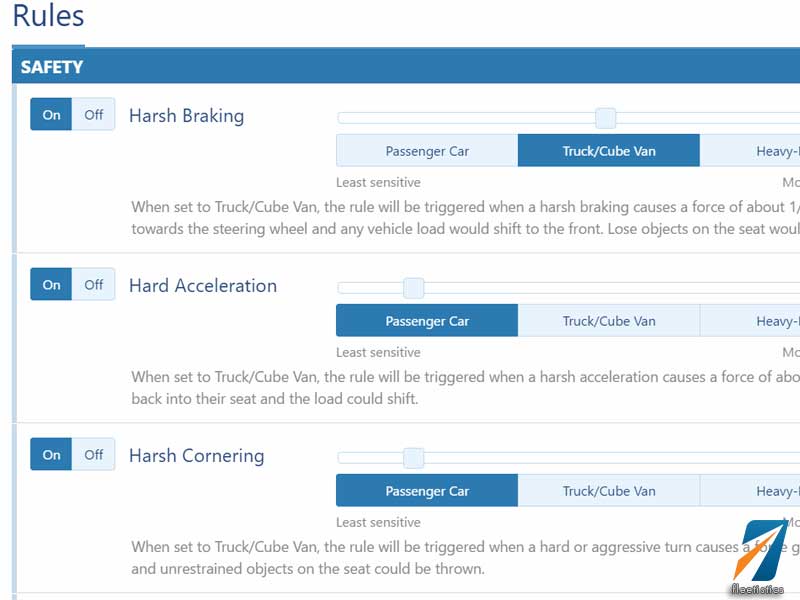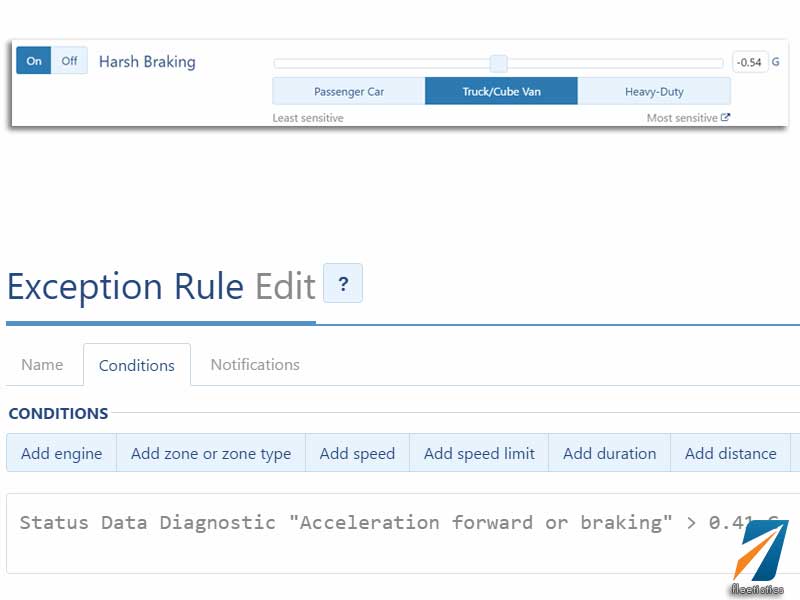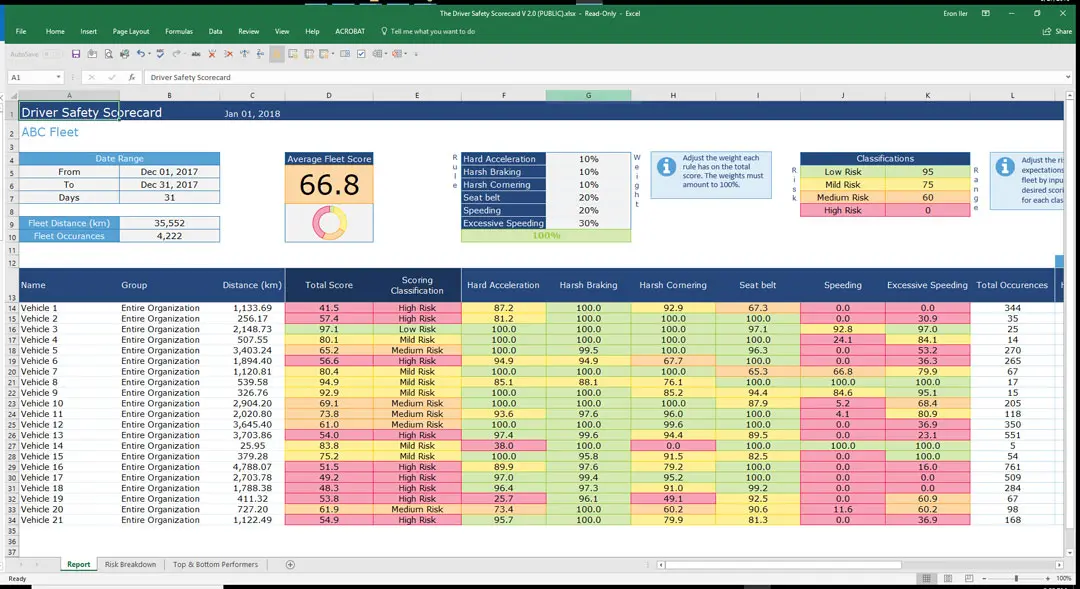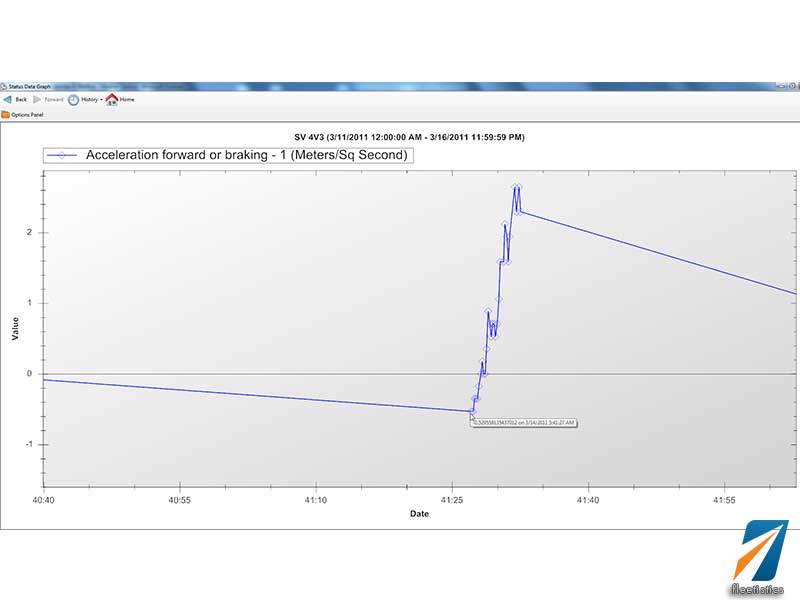Improving Fleet Safety
Fleet safety can be dramatically improved by using telematics data to measure and improve driving behavior. Telematics refers to the systems and sensor on a vehicle. Fleet telematics merges data from vehicle systems and sensors with people to better manage fleet operations. Vehicle tracking systems port the telematics data with the GPS tracking data which becomes available to fleet managers online.
Accelerometer measures force in various directions but generally up & down, forward & backward and left & right. The accelerometer on the GO System samples and g-force 100 times a second. The data is evaluated and logged if high enough to represent unwanted driving habits or an accident. To read more about how the accident logger works, click here.

Risk Management
The GO System provides multiple methods of producing data which can be used for risk management. One major corporation using the GO System has reported savings of $127 million dollars on a $5 million dollar investment. This equates to a savings of about $2,500 per vehicle.

Vehicle Class
Vehicles of various classes move in different ways. A fleet of large trucks operating off-road might have different g-force limits compared to those on the highway. Also large trucks obviously have different g-force limits than a fleet of standard light duty pickup trucks or sedans. The GO System enables fleet managers to set thresholds based on vehicle class and the g-force limits within each class.

Driver Safety Scorecard
The most expensive option is having to replace drivers. The data can be used to coach drivers to achieve the wanted behavior for a culture of fleet safety. A Driver Scorecard includes many variables that fleet managers can utilize to identify the riskiest driver for remedial coaching.
Fleet Saftey is a Culture
Fleet safety starts at the top with a conscious decision and investment of time and money. One investment is in a telematics system that provides data from which safety can be measured. The GO System takes it one step further and provides the driver feedback. This feedback coaches the driver on unwanted behavior such as harsh breaking through a buzzer in the GPS device. Ongoing infractions indicate a driver who may be unwilling to change habits and represents a risk to company assets and legal liability.

G-Force Graph
G-force events are used to aid in accident reconstruction. The data is stored for a rolling 100 seconds before and after an accident level event. This highly detailed GPS logging data can be plotted on a map to show everything from a vehicle rollover, to swerving to and impact.


